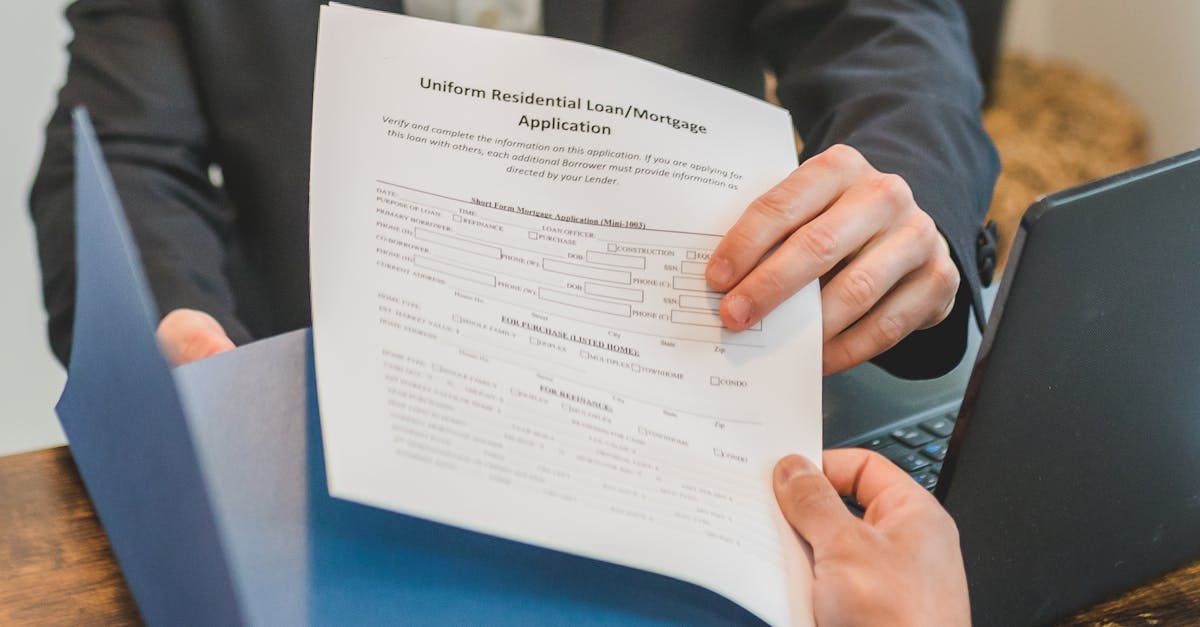
Table Of Contents
Short-Term vs. Long-Term Multifamily Loans
Short-term multifamily loans typically have repayment periods ranging from one to five years. These loans are often used by investors looking to finance properties requiring quick acquisition or renovation. The shorter time frame allows borrowers to take advantage of immediate opportunities in the market, such as distressed properties. Interest rates can be lower for these loans, making them appealing for strategic investments.
Long-term multifamily loans, on the other hand, generally span ten to thirty years. These loans provide stability and predictable monthly payments, which can be beneficial for property owners seeking steady cash flow from rental income. Multi-Family Apartment Loans of this nature may have fixed interest rates, making budgeting easier over time. Investment strategies often dictate the choice between short-term and long-term options, with each serving distinct financial goals in real estate.
Pros and Cons of Each
Short-term multifamily loans typically offer advantages such as lower interest rates and faster approval processes. Investors seeking quick capital for property acquisition or renovations often prefer these loans. The payoff comes at a cost, as the repayment period is limited, which may lead to higher monthly payments. This structure can be challenging for those without consistent cash flow.
On the other hand, long-term multifamily loans provide extended repayment periods, making monthly payments more manageable. This option can help investors maintain cash flow while leveraging their properties over a more extended period. However, these loans may come with higher overall interest rates and potential prepayment penalties. Understanding the long-term commitment is crucial for those looking into multi-family apartment loans, as the implications often extend beyond immediate financial considerations.
Impact of Interest Rates on Loan Length
Interest rates play a significant role in determining the length of multifamily loans. When rates are low, investors tend to opt for longer loan terms to lock in the favorable rate, allowing for more manageable monthly payments. Conversely, higher interest rates may encourage shorter loan terms, as borrowers seek to avoid paying excessive interest over time. This can lead to increased cash flow pressures, especially for multi-family apartment loans with tighter margins.
Additionally, fluctuations in interest rates often impact the overall borrowing landscape. Lenders adjust their risk assessments based on current rates, which can influence the terms and length of available loans. For multi-family apartment loans, higher perceived risk may result in shorter loan periods, meaning investors need to carefully consider their financing options in an environment with rising interest rates.
How Rates Affect Loan Terms
Interest rates play a significant role in determining the terms of multi-family apartment loans. When rates are low, borrowers often have the ability to secure longer loan terms, which can lead to lower monthly payments and improved cash flow. Conversely, high interest rates typically result in shorter loan terms, increasing monthly payment obligations. This interplay between interest rates and loan length can influence a lender's risk assessment and willingness to offer favorable terms.
Additionally, interest rates can impact the overall cost of financing multi-family apartment loans. A fixed-rate loan might appeal to investors looking for stability over time, allowing them to budget effectively amidst fluctuating market conditions. On the other hand, adjustable-rate loans can offer lower initial payments but may lead to uncertainty as interest rates change. Understanding these dynamics is crucial for prospective borrowers aiming to optimize their financing strategies in the multi-family property sector.
Prepayment Penalties and Their Role
Prepayment penalties are conditions imposed by lenders that charge borrowers a fee for paying off their loan early. These penalties can significantly impact the financial strategy of investors in the multifamily property sector. Multi-Family Apartment Loans often come with varied terms which dictate the extent of these penalties, depending on how long the borrower has maintained the loan. Investors should carefully review these terms, as excessive penalties can eat into the financial benefits gained from refinancing or selling a property.
Understanding how prepayment penalties work is crucial for anyone considering Multi-Family Apartment Loans. Such penalties are designed to protect the lender’s interest should the borrower opt to pay off the loan ahead of schedule. For those looking to maximize their investment, anticipating these costs is essential in evaluating the overall profitability of a property. A thorough examination of the loan agreement can reveal critical information that impacts long-term investment decisions.
Understanding Loan Agreements
Understanding loan agreements is crucial for anyone seeking financing in real estate, particularly with multi-family apartment loans. These documents outline the specific terms and conditions associated with the loan, detailing aspects such as repayment schedules, interest rates, and obligations of both the lender and borrower. A clear comprehension of the agreement helps ensure that all parties are aware of their rights and responsibilities, promoting a smoother transaction process.
Borrowers should pay close attention to various components of the agreement, including amortization schedules and potential prepayment penalties. Multi-family apartment loans may include unique clauses that address maintenance of the property or requirements for occupancy rates. Knowledge of these elements enables investors to make informed decisions, minimizing risks and enhancing the potential for success in their real estate ventures.
FAQS
What is the typical length of a multifamily loan?
Multifamily loans typically range from 5 to 30 years, depending on the type of loan and the lender’s terms.
Are there different types of multifamily loans?
Yes, multifamily loans can be categorized as short-term or long-term, with various options such as conventional loans, FHA loans, and bridge loans.
What are the pros of short-term multifamily loans?
Short-term multifamily loans often have lower interest rates and can provide quicker access to capital, making them suitable for investors looking to flip properties or make quick renovations.
How do interest rates influence the length of multifamily loans?
Higher interest rates can lead to shorter loan terms as borrowers seek to pay off debt quickly, while lower rates may encourage longer loan durations to take advantage of favorable payments over time.
What should I know about prepayment penalties on multifamily loans?
Prepayment penalties are fees that lenders may impose if you pay off your loan early. It’s important to review loan agreements carefully to understand any potential penalties and how they may impact your financial strategy.





